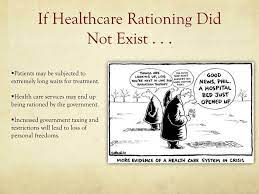As What Is Rationing Health Care the world continues to grapple with the COVID-19 pandemic, the idea of rationing health care has become a hot topic. But what exactly does it mean? Is it ethical? And how could it impact us in our daily lives? In this blog post, we’ll explore everything you need to know about rationing health care and why it matters more now than ever before. So grab a cup of coffee, settle down and get ready to dive into one of the most pressing issues facing healthcare systems around the globe today!
What is Rationing?
Rationing is the practice of allocating a fixed quantity of a particular good or service, such as health care, among different groups. It is usually used when there is not enough of the good or service to go around, and it is important to make sure that everyone receives an equal amount.
Rationing can be done by giving people a set number of doses of medicine, say, every day; by giving patients a certain number of visits per year to the hospital; or by limiting the number of operations that doctors can perform in a given period.
Rationing can also refer to how much money someone has available to spend on goods and services. In this sense, rationing can be used to control inflation (when prices rise too high) or to prevent shortages (when there are not enough goods or services available).
Types of Rationing
Rationing health care is the practice of allocating limited health resources in a way that ensures that everyone has an equal chance of getting the care they need. There are many different types of rationing, but some common types include:
1. Waiting lists: Patients who need medical care can be put on a waiting list if there are not enough resources to provide treatment to everyone who needs it. People who are on the waiting list may have to wait for a long time before they can get treatment.
2. Price controls: Prices for medical services may be controlled to make them more affordable for people who need them. This can mean that patients have to pay less for medical services than they would if prices were free.
3. Limiting treatments: Some treatments might be restricted because there is not enough money available to provide them to everyone who needs them. This means that some people might not be able to get the treatments that are best for their health.
4. Restricting the number of patients: Hospitals and other health care providers may be allowed to treat only a certain number of patients at a time, depending on how much money is available. This limits the amount of care that each patient can receive and can lead to longer wait times.
How is rationing practiced?
Rationing health care is the practice of limiting the number of medical treatments or services that a patient can receive in order to control costs. This is often done in an attempt to prevent long wait times for treatment, which can be a major factor in insurance premiums and the overall cost of care.
There are several ways that rationing can be implemented in health care systems. One common method is creating waiting lists for specific medical procedures or treatments. Patients who need a specific medical intervention may have to wait until there is space on the list, which can depend on how urgently the need is deemed. If there are not enough patients on the waiting list, then patients may have to wait indefinitely for treatment.
Another way that rationing can occur is through price controls. This means that health care providers are not allowed to charge more for treatments than what the government has set as a ceiling value. This policy was initially put into place during World War II in order to prevent doctors from turning away patients based on financial concerns.
There are also measures taken to limit how much information doctors can give their patients about expensive treatments. This is referred to as information secrecy or clinical apathy, and it happens when doctors refuse to share important information with their patients about potential treatments because they fear it will drive up costs unnecessarily.
Overall, rationing health care means that certain people or groups of people will not be able to access necessary treatment due to limitations placed on healthcare spending
The Pros and Cons of Rationing Health Care
There are pros and cons to rationing health care in an effort to ensure that everyone has access to the best possible care. On the pro side, rationing eliminates waste and improves efficiency. It also allows for better prioritization of resources, which can lead to more cost-effective treatments and procedures.
On the con side, rationing can create resentment among patients and doctors. It can also lead to long wait times for some services, since patients who need them most will be first in line. Rationing may also cause some people to lose their health insurance or access to necessary treatments altogether.
Conclusion
In this article, we explored the concept of rationing health care and what it means for you and your family. Rationing is a process by which health care providers determine how much medical care to provide to patients based on available resources. In some cases, rationing can be necessary in order to maintain a balanced health care system that meets the needs of all patients. It is important to understand the implications of rationing so that you can make an informed decision about whether or not you would like to participate.











